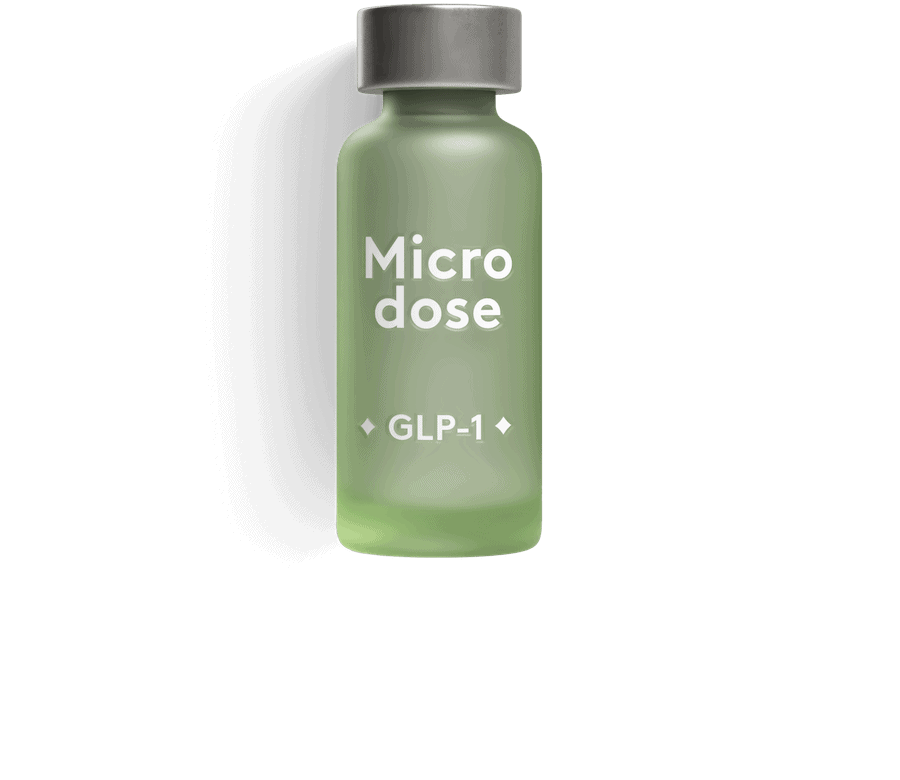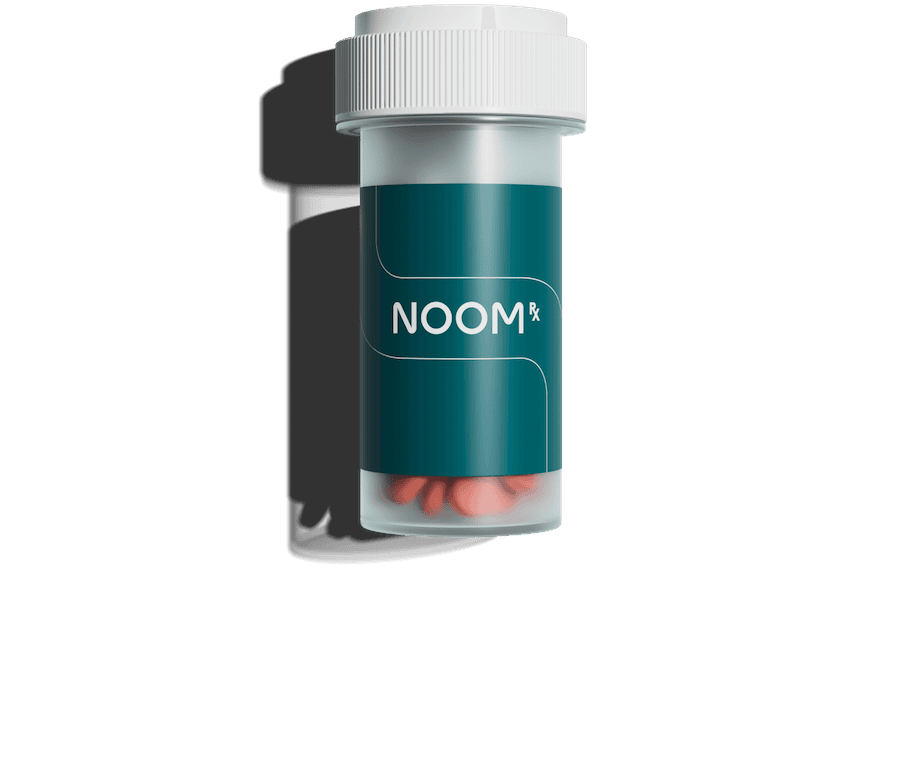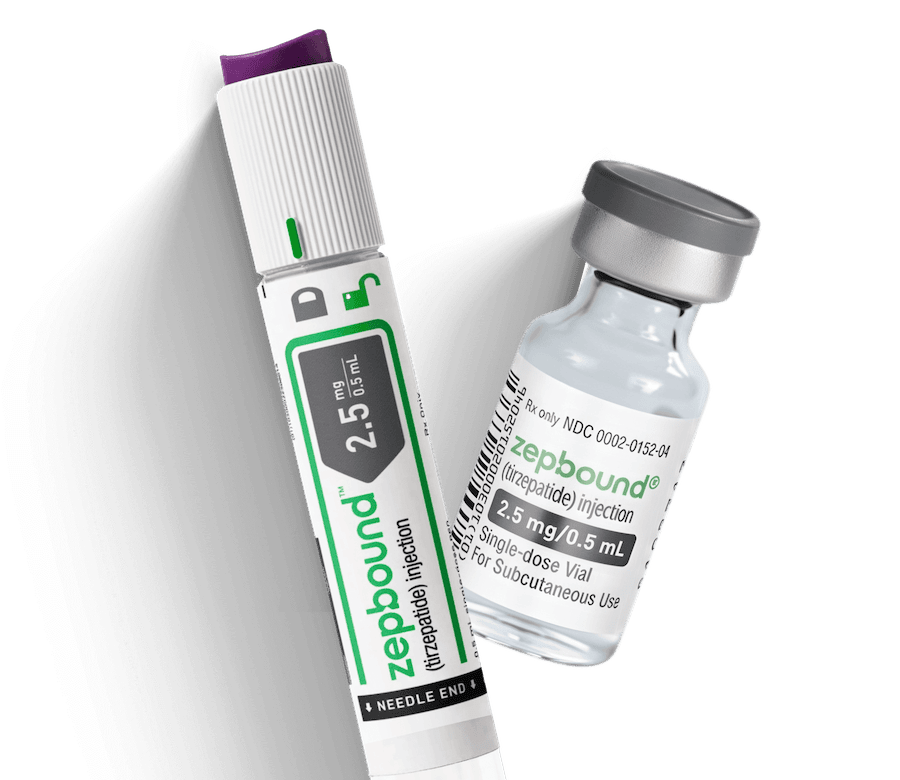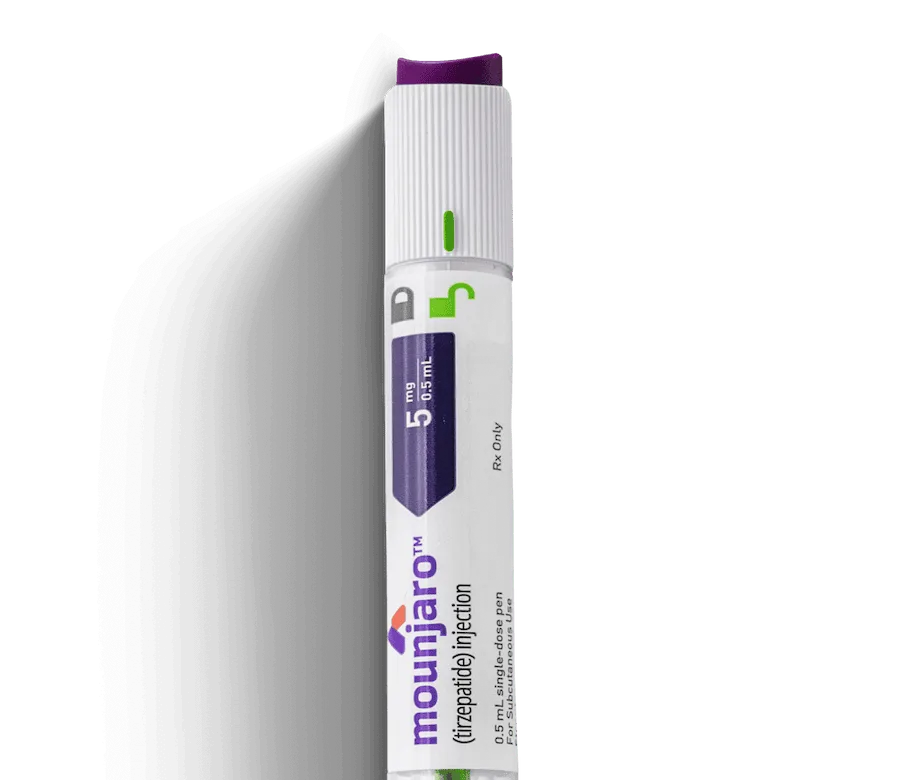- What is Topamax® and how does it work?
- How much weight can I lose taking Topamax®?
- What does Topamax® cost?
- How to take Topamax® for weight loss
- Topamax®: Dosage adjustments & personalization
- Topamax®: Side effects and safety
- Topamax® vs. other weight loss medications
- FAQs about Topamax®
- The bottom line: Off-label weight loss with Topamax® is moderate
What you’ll learn:
- Topamax® is a medication that is approved to treat seizures and migraines, but may also be prescribed off-label for weight loss.
- In studies, the highest doses of Topamax® led to an average of 6% weight loss over 24 weeks, which is modest compared to GLP-1 treatments.
- Combining Topamax® with calorie reduction and regular physical activity can help you achieve more consistent progress.
Today’s weight-loss landscape offers more prescription choices than ever. While GLP-1 drugs like Wegovy® and Zepbound® often lead the conversation, people often turn to other medications to help them lose weight. One of these is Topamax®.
Topamax® is a brand name for a medication with the active ingredient topiramate, which is approved to treat seizures and prevent migraines. Though its primary purpose isn’t weight loss, it can be prescribed off-label to help with appetite control and weight management.
You’ll also find topiramate combined with phentermine in the drug Qsymia®, a medication that is approved by the FDA for weight loss.
Let’s talk about how Topamax® works on its own and in combination with phentermine, how much weight loss you might expect, how it’s taken, and how it compares with other prescription options for weight management.
What is Topamax® and how does it work?
While it’s mainly prescribed for seizures and migraines, Topamax® (topiramate) has other effects that can affect your eating habits. The way it acts in the brain can dull appetite, enhance feelings of fullness, and make some foods less enjoyable. Those changes may reduce hunger cues, make certain foods taste less appealing, and help you feel satisfied sooner during meals.
Because Topamax® isn’t FDA-approved for weight loss, there are no official recommendations on who should take it or how it should be taken. However, studies usually included people with:
- A BMI of 30 or higher
- A BMI of 27 or higher with high blood pressure and/or abnormal cholesterol levels
In those same studies, Topamax® was typically taken twice a day, with doses adjusted gradually over time. It comes in two different forms, tablets or sprinkle capsules. You can also find both as generic topiramate, which is often much cheaper.
How does it cause weight loss?
The exact way topiramate supports weight loss isn’t fully understood. What’s known is that it appears to reduce appetite, help people feel satisfied with smaller portions, and make some foods less appealing. Together, these effects can help lower daily calorie intake and support gradual weight loss.
How much weight can I lose taking Topamax®?
Topamax® has been shown to support modest weight loss when it’s paired with healthy habits like balanced eating and regular movement. In clinical studies, people lost an average of 5 to 6% of their starting weight over six months. Many noticed changes as early as week four, with steady progress continuing through the 24-week point.
In those same studies, people also followed an eating plan that cut about 600 calories a day, tracked their food and activity, and had regular coaching on nutrition and exercise. These steps worked hand in hand with the medication to make results more consistent and easier to maintain.
People who take Qsymia®, the combo drug for phentermine and topiramate, often see more weight loss. In studies, those on the highest approved dose lost around 10% of their starting weight after a year—nearly double what’s typically seen with Topamax® or topiramate alone.
How quickly will I lose weight with Topamax®?
Changes often appear within the first few weeks, and the weight loss continues at a steady pace for months after. Studies also suggest the effect is dose-dependent, meaning higher doses are linked to greater weight loss.
That said, no two experiences are exactly the same. Your eating habits, activity level, and how your body responds to the medication all play a role in how much weight you lose.
What does Topamax® cost?
The price of Topamax® can vary widely depending on whether you fill a brand-name or generic prescription, the strength of the dose, and your pharmacy location. Brand-name Topamax® is on the higher end, and insurance usually doesn’t cover it when it’s prescribed off-label for weight loss. The generic topiramate is typically more affordable.
Here’s a breakdown of the average retail price ranges from GoodRx for all options.
| Medication | Dosages | Monthly price |
|---|---|---|
| Topamax® tablets | 25 mg, 50 mg, 100 mg, 200 mg | $250 – $880 |
| Topamax® sprinkle capsules | 15 mg, 25mg | $1,042 – $1,782 |
| Generic topiramate | 15 mg, 25 mg, 50 mg, 100 mg, 200 mg | $50 – $200 |
Prices can fluctuate, so it’s best to confirm exact costs with your pharmacy or insurance provider before filling a prescription.
When is Topamax® covered by insurance?
Insurance coverage depends largely on why you are prescribed topiramate. Most commercial plans, as well as Medicare Part D, will generally cover generic topiramate when used for FDA-approved conditions such as seizures or migraine prevention. If your prescription is off-label for weight loss, coverage is far less common, and you may need to pay out of pocket.
Can you save on Topamax® with manufacturer discounts?
Yes, the Topamax® Savings Program can help lower your costs if you have commercial insurance.
Rx weight loss, the right way, with Noom
Get access to prescription weight loss medication with Noom.How to take Topamax® for weight loss
Topamax® comes in several oral formulations and strengths, giving prescribers flexibility to meet different health needs. Here are the main options you might see on a prescription:
| Formulation | Dosage strengths available |
|---|---|
| Topamax® tablets | 25 mg, 50 mg, 100 mg, 200 mg |
| Topamax® sprinkle capsules | 15 mg, 25mg |
Typical dosing for Topamax® depends on what you’re using it for. The official prescribing information lays out details for epilepsy and migraine, but those regimens can look very different from what’s been studied in weight management.
Topamax® doesn’t have an FDA-approved dose for weight loss, but clinical trials give us a good idea of how it may be used. In a 24-week trial, people started with 16 mg once daily during the first week. In week 2, they switched to 16 mg twice daily (32 mg total per day). From there, the daily amount was increased by 32 mg each week (16 mg added to both doses) until participants reached their assigned target dose.
Here’s the dosing schedule that was used in the study:
| Week | Daily dose used in the trial |
|---|---|
| Week 1 | 16 mg once daily |
| Weeks 2–24 | 16 mg twice daily, increasing by 16 mg per dose (32 mg total per day) |
| Target doses | 64 mg, 96 mg, 192 mg, or 384 mg per day |
The study found that higher doses led to more weight loss, but they also came with a greater chance of side effects.
Topamax®: Dosage adjustments & personalization
There’s no one-size-fits-all approach to Topamax®. Dosing usually begins low and increases slowly, with adjustments based on:
- Kidney health: Because Topamax® leaves the body through the kidneys and can raise the chance of kidney stones, your provider may lower the dose or slow the titration if needed.
- Tolerance: Side effects such as tingling or drowsiness that don’t go away may signal the need to pause or reduce your dose.
- Progress: Since weight loss with Topamax® tends to be dose-dependent, your provider may carefully raise your dose if your progress has slowed.
If symptoms continue or affect your routine, reach out to your provider so they can help ensure that Topamax® works safely for you.
Tips for the best weight loss results
Topamax® isn’t a stand-alone solution—it works best with diet and exercise changes. People in studies followed personalized meal plans that cut about 600 calories a day. They also joined a structured program, like Noom, that taught them how to manage eating, activity, and daily habits.
Topamax®: Side effects and safety
Like many prescription medications, Topamax® can cause side effects. Having a good idea of what to expect helps you stay on track and get the best outcome.
Common side effects
The most common side effects of Topamax® are usually mild and may fade as your body adjusts. These can include:
- Tingling in the arms or legs (paresthesia)
- Nausea, diarrhea, or stomach discomfort
- Changes in how food tastes
- Tiredness, drowsiness, or feeling dizzy
- Slower reaction time or trouble with memory and speech
- Fever, abdominal pain, or minor vision changes
Rare but serious side effects
Serious reactions are uncommon, but it’s important to recognize warning signs and act quickly:
- Kidney stones – Topamax® increases the risk of kidney stones. Call your doctor if you notice flank pain, blood in your urine, or painful urination.
- Vision problems – Sudden blurred vision, eye pain, or loss of sight should be treated as emergencies. If this happens, get medical help right away.
- Metabolic acidosis – Symptoms like rapid breathing, confusion, or persistent fatigue can indicate high acid levels in the blood. This is an emergency and requires immediate medical attention.
- Mood or behavior changes – A small number of people experience new or worsening depression, anxiety, irritability, anger, or even suicidal thoughts. Call your healthcare provider immediately if these changes occur.
- Allergic reaction – Get urgent medical attention if you develop a rash, itching, facial or throat swelling, or breathing difficulties.
If you notice any of these symptoms or other concerning changes while taking Topamax®, contact your healthcare provider right away.
Who shouldn’t take Topamax®
Topamax® isn’t right for everyone. It’s generally not recommended for people who:
- Have a history of kidney stones or metabolic acidosis
- Have liver problems or weakened bones
- Have eye conditions such as glaucoma
- Are pregnant or planning to become pregnant, since Topamax® can increase the risk of birth defects
- Are breastfeeding, since Topamax® passes into breast milk and may cause drowsiness or diarrhea in your baby
- Have an allergy to topiramate or any of its ingredients
Your provider may also use extra caution if you’re on a ketogenic diet, have lung or breathing issues, or are planning surgery. Always share your complete health history with your provider before starting Topamax®.
Topamax® vs. other weight loss medications: Weight loss potential
When it comes to weight loss, Topamax® (topiramate) usually brings modest results compared with many newer medications. Here’s how it measures up in research:
| Medication | Study length | Average weight loss |
|---|---|---|
| Topiramate – 384 mg (Topamax®) | 24 weeks | 6% |
| Phentermine/topiramate ER – 15 mg / 92 mg (Qsymia®) | 56 weeks | 10% |
| Semaglutide – 2.4 mg (Wegovy®) | 68 weeks | 15% |
| Tirzepatide – 15 mg (Zepbound®) | 72 weeks | 21% |
| Liraglutide – 3 mg (Saxenda®) | 56 weeks | 6% |
| Metformin | 24–52 weeks | 7% |
Topamax® can be helpful for some, but combination options like phentermine/topiramate ER (Qsymia®) and GLP-1 medications such as semaglutide or tirzepatide often lead to greater weight loss, especially over longer periods.
Your healthcare provider can help you decide which approach fits best with your health history, lifestyle, and weight management goals.
Frequently asked questions about Topamax®
Have questions about taking Topamax® for weight loss? Here are clear, quick answers to the most common ones, from dosing to lifestyle tips.
What is the normal dose of Topamax® for weight loss?
Topamax® isn’t FDA-approved for weight loss, so there’s no official dose for this use. In clinical trials, people started with 16 mg once a day and then slowly increased to target doses ranging from 64 mg to 384 mg daily, split between morning and evening doses. The “right” amount depends on your health needs and should always be guided by your provider.
Can you drink alcohol while taking Topamax®?
It’s best to avoid alcohol with Topamax®. Drinking can make side effects like dizziness, drowsiness, or slower thinking worse, which may make driving or daily activities unsafe.
What happens if I miss a dose of Topamax®?
If you miss a dose of Topamax®, take it when you remember—unless your next one is less than six hours away. In that case, skip the missed dose and continue as normal. Don’t double up, as taking extra Topamax® can raise the risk of side effects.
How long can you safely take Topamax®?
Clinical studies with Topamax® for weight loss lasted about 24 weeks. Depending on your results and side effects, your provider may suggest a different plan. Staying in touch with them helps make sure your dose stays safe.
Can you stop taking topiramate abruptly?
No, it’s not safe to stop Topamax® suddenly. Doing so can cause serious issues such as seizures, even if you don’t take it for epilepsy. Your provider will help taper your dose safely if needed.
What kind of diet and exercise plan works best with Topamax®?
Topamax® worked best in studies when paired with a diet about 600 calories lower per day, plus regular physical activity. People also tracked meals and exercise and received coaching. Pairing Topamax® with healthy routines gives you the best chance for steady progress.
Subscribe to Noom Digest
With the latest Noom news, insightful articles, and a healthy dose of inspiration, Noom Digest might just become your favorite newsletter.The bottom line: Off-label weight loss with Topamax® is moderate
Topamax® is primarily an anticonvulsant for epilepsy and migraines, and its use for weight loss is off-label.
While Topamax® can offer weight loss support, the results are typically modest and less than the reductions often reported with GLP-1 medications. Ultimately, deciding if it fits your goals means looking beyond the numbers—considering your health history, how long you plan to stay on treatment, and how it fits into your lifestyle.
If you’d like to explore prescription options beyond Topamax®, see if you qualify for Noom Med. We’ll match you with a licensed clinician who can evaluate your health goals, discuss medications like GLP-1s or other proven treatments, and prescribe medication if needed. Your medication will be paired with personalized coaching and all of Noom’s healthy living tools and trackers to support long-term success.
Note: Topamax®, Ozempic®, and metformin are not FDA-approved to treat obesity or for weight loss.
Why you can trust us
At Noom, we’re committed to providing health information that’s grounded in reliable science and expert review. Our content is created with the support of qualified professionals and based on well-established research from trusted medical and scientific organizations. Learn more about the experts behind our content on our Health Expert Team page.











